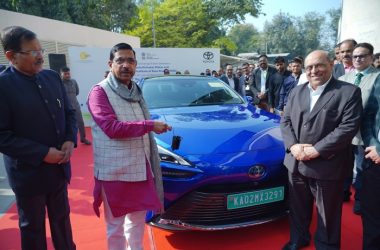New contracts cover over 24,000 km of highways, backed by innovation, accountability, and app-based oversight
In a significant push towards ensuring the longevity and safety of India’s National Highway (NH) network, the Government has reaffirmed its commitment to high-quality highway maintenance through a comprehensive and accountable framework. This strategic shift was detailed by Union Minister for Road Transport and Highways, Nitin Gadkari, in a written reply to an unstarred question in the Lok Sabha.
The Government has evolved a robust mechanism for Maintenance and Repair (M&R) of all NH sections by engaging accountable maintenance agencies. National Highway projects are executed under various models including Build Operate and Transfer (BOT), Hybrid Annuity Model (HAM), and Engineering Procurement and Construction (EPC), with concession periods ranging from 5 to 30 years depending on the model.
Under the BOT and HAM models, maintenance responsibilities rest with the concessionaire for periods ranging from 15 to 20 years. For Toll-Operate-Transfer (TOT) and Infrastructure Investment Trust (InvIT) projects, this can extend to 30 years. EPC projects come with Defect Liability Periods (DLP) of 5 years for bituminous roads and 10 years for concrete roads. Operate, Maintain and Transfer (OMT) projects typically carry a 9-year concession.
To address stretches no longer under any active concession or DLP, the Government has institutionalized Performance Based Maintenance Contracts (PBMC) and Short Term Maintenance Contracts (STMC). In the current financial year 2024–25 alone, STMCs have been sanctioned for 17,884 km at a cost of ₹2,842 crore, while PBMCs cover 6,118 km with a budget of ₹6,757 crore.
The new regime includes strict timelines for defect rectification, backed by regular field inspections and penalty clauses for non-compliance. Moreover, the Government is actively promoting innovative construction techniques to enhance durability and reduce long-term maintenance needs. These include the use of high-performance materials such as geosynthetics, fiber-reinforced concrete, perpetual pavements, and modified bituminous mixes.
In a major leap toward transparency and efficiency, digital tools have been integrated into the process. The National Highways Authority of India (NHAI) uses Network Survey Vehicles (NSVs) to assess road conditions at regular intervals. Additionally, app-based platforms like NHAI One and Tatpar allow field engineers, contractors, and concessionaires to monitor and report progress in real-time, using geo-tagged photos and cloud-based documentation.
This multi-pronged approach ensures not only timely repair and maintenance but also a future-ready national road infrastructure. With innovation, digital oversight, and long-term planning at its core, the Government is paving the way—quite literally—for safer, smoother, and smarter highways across India.







